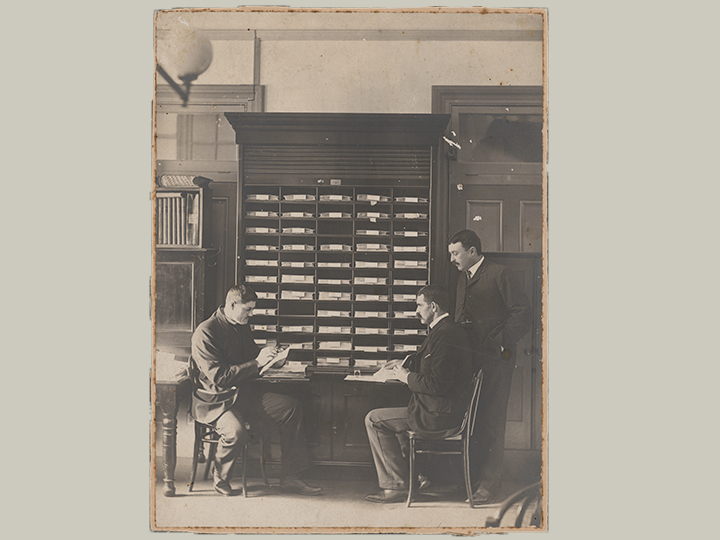On 23 December 1903, at around 8.15pm, Alfred Hemsley was in his sitting room at his home in Potts Point when he heard a loud noise next door.
Knowing that his neighbour wasn't home, he immediately contacted the police to tell them of the disturbance, and two officers arrived at the scene. They entered the neighbour's house and promptly returned with Frenchman John Miller (or Henry Hunter, as he was also known) and arrested him for being in an enclosed area for an unlawful purpose.
The following morning, Hemsley suspected something was amiss when he noticed fingerprints on his upstairs window. He was no doubt familiar with recent newspaper reports about the establishment of the country's first fingerprinting bureau, and he recognised the potential value of the fingerprints in investigating what had happened. The police had sections of the window removed for examination.
When Miller appeared in the Water Police Court on Phillip Street, he was surprised to hear he was accused of an additional breaking and entering charge.

'Yes', confirmed Senior Constable Jonathan Wilson, as reported in the Sydney Morning Herald, 'there were some fingerprints found in the house, and I’m going to endeavour to prove they are yours.'
Forensic experts were, indeed, able to confirm that the fingerprints found by Hemsley were identical to those taken from Miller. The police found Miller's prints on the inside and outside of the window, proving he had been both inside and outside the house.
On 11 February 1904, Miller appeared before the Sydney Court of Quarter Sessions. Faced with the compelling fingerprint evidence, he pleaded guilty and was sentenced to three years in prison.
It was the first time fingerprint identification was used as evidence to secure a criminal conviction in Australia.
